So how exactly did a water seller operate?
Look closely at his outfit for some clues:
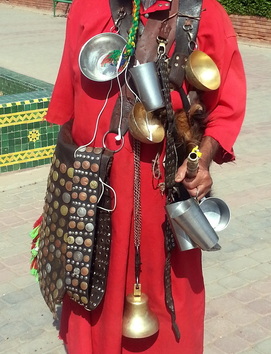
First of all we see the brass and tin cups. These were used by the customers to drink from. Long before "Reduce, reuse, recycle" these water-sellers were 100% eco-friendly.
The water-seller carried water from cisterns in the outskirts of the city to the busy market areas.
How did he carry the water?
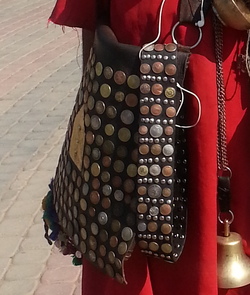
Look closely at the large leather pouch. It is probably made from goats leather, or it could be camel leather. It is specially treated to hold water (traditionally a goats bladder). The water seller often flavoured his water with mint leaves or lemon (to take away the taste of...).
The water-seller also held his money in a pocket of the leather pouch. If he liked a coin or it was unusual he would stick it on the outside of the pouch. Over time, it became quite ornate.
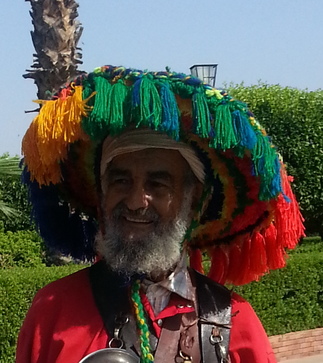
Working outside in the relentless Moroccan heat needs sun protection. This traditional Berber hat is eye-catching but it also provides good shade.
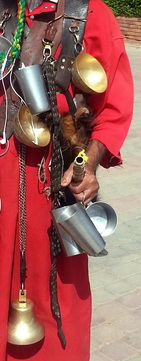
Finally, the water-seller has to make himself known to the medina. He uses rings his bell, toots his horn, sings, chants and sometimes dances.
All around Morocco I encountered these entertainers. They were always brightly coloured, in traditional dress. Some don't wear the cups and bells anymore and focus more on their entertaining.
Below is a very short video of one in Fez who knew a lot of English pop songs!

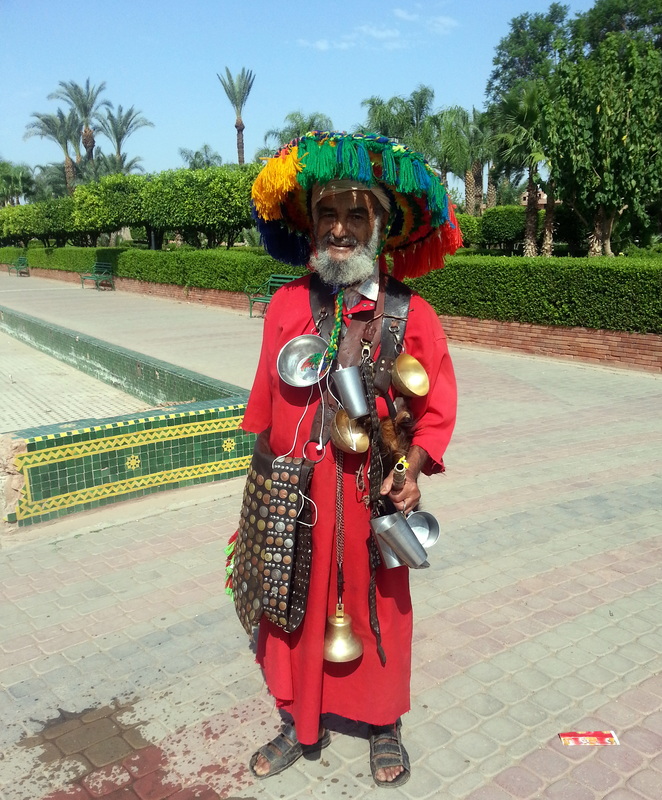
 RSS Feed
RSS Feed